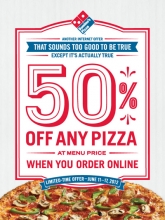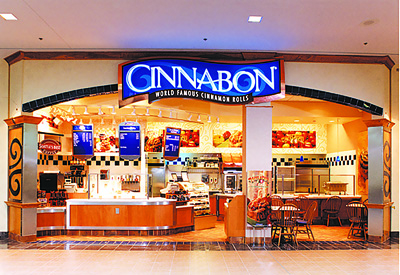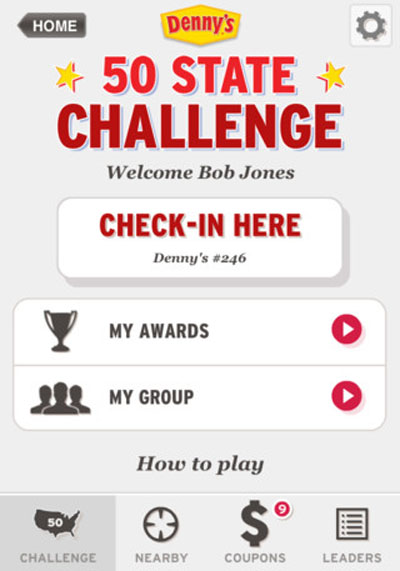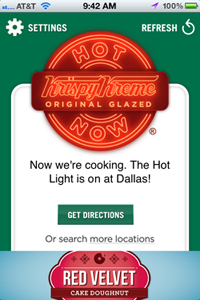The restaurant industry’s most effective digital and mobile campaigns in 2012 showed the power of using new media not for fan acquisition but for fan engagement.
Some were high-profile giveaways like Papa John’s online-ordering promotions that featured NFL quarterback Peyton Manning and tied in with the Super Bowl. Others succeeded by being barely noticeable to guests, like Cinnabon’s and Texas Roadhouse’s behind-the-scenes work to correct and optimize all their individual locations in location-based platforms like Foursquare and Facebook Places.
RELATED
• Hot menu ingredients of 2012
• Notable restaurant industry deals and IPOs of 2012
• The biggest restaurant industry news of 2012
But whether restaurant brands were communicating via social media or smartphones, they succeeded most by speaking to the consumers who already opted to engage with them in ways beyond visiting their stores regularly.
Nation’s Restaurant News looks at four of the most effective digital marketing tactics from the past year.
Online ordering promotions
Two restaurant chains that have been at the forefront of digital ordering and marketing for years, Papa John’s Pizza and Domino’s Pizza, ran aggressive value promotions through their online-ordering portals to celebrate the fact that so many guests already prefer placing their orders via computer and smartphone applications.
 Domino’s, for example, ran “customer appreciation weeks” in June, August and December of this year, offering 50 percent off all pizzas ordered online, via mobile web, or on the chain’s iPhone, Android or Kindle Fire apps. The brand of approximately 5,000 pizza restaurants in the United States started the first weeklong offer after announcing that it had surpassed $1 billion in digital sales during a 12-month period for the first time.
Domino’s, for example, ran “customer appreciation weeks” in June, August and December of this year, offering 50 percent off all pizzas ordered online, via mobile web, or on the chain’s iPhone, Android or Kindle Fire apps. The brand of approximately 5,000 pizza restaurants in the United States started the first weeklong offer after announcing that it had surpassed $1 billion in digital sales during a 12-month period for the first time.
“Reaching $1 billion in online sales during a one-year time period is a major milestone,” chief marketing officer Russell Weiner said, “and we hope offering this amazing deal for an entire week lets our fans and customers know how much we appreciate them.”
Papa John’s also executed two massive giveaways to members of its online loyalty club, Papa Rewards, offering free large, one-topping pizzas to guests already enrolled in the program and driving increases in registration for the club. The first occurred during February’s Super Bowl matchup between the New York Giants and the New England Patriots. Papa John’s supported the giveaway with a large television ad buy for commercials starring chief executive John Schnatter and football players Peyton Manning and Jerome Bettis.
The gimmick for the Super Bowl tie-in was that Papa John’s asked Americans to vote online for what they thought the result of the pre-game coin toss would be, and if the majority called it right, the chain would give away 1 million free pizzas to Papa Rewards members. Brand officials said the promotion was so popular that it drove in part the 1.1-percent increase in first-quarter same-store sales for Papa John’s 3,100 locations in North America.
Manning and Schnatter upped the ante in September to roll out the 2 Million Pizza Giveaway as a tie-in to the season opener of the 2012 National Football League season.
Venue optimization
Most restaurant executives might argue their brands could never have too many units, but that case often is true in location-based social media, and it prompted Cinnabon and Texas Roadhouse to audit their presence on Facebook and Foursquare this year through a process called venue optimization.
 In Cinnabon’s case, while each of its 500 U.S. bakeries had one real brick-and-mortar location, they may have had several entries on mobile-social platforms like Foursquare and Facebook Places. Duplicates, missing listings or incorrect GPS coordinates caused many Cinnabon locations to not show up in search results for Foursquare users.
In Cinnabon’s case, while each of its 500 U.S. bakeries had one real brick-and-mortar location, they may have had several entries on mobile-social platforms like Foursquare and Facebook Places. Duplicates, missing listings or incorrect GPS coordinates caused many Cinnabon locations to not show up in search results for Foursquare users.
The Atlanta-based chain worked with social-marketing firm MomentFeed to audit and enter the correct information for every Cinnabon location on every location-based network, said corporate-communications manager Rachel Hadley.
“Venue optimization creates one location that would be checked into most often, and that increases your visibility on Foursquare,” she said. “If there are 10 other venues for that location with a few check-ins, they’ll all be lower in the search results.”
After Cinnabon began its venue optimization campaign in April, engagement on Foursquare and Facebook increased 12.5 percent and 19 percent per month, respectively, through July. Upon completion of the campaign in July, Cinnabon’s numbers reached a higher plateau of engagement by August, with check-ins increasing another 43 percent and 63 percent on Foursquare and Facebook, respectively, in one month.
Texas Roadhouse initiated its venue optimization effort in August, registering its 390-plus locations on Facebook Places and Foursquare, eliminating duplicates, and correcting inaccurate coordinates.
According to MomentFeed, across a three-month period, Texas Roadhouse grew its total unique impressions on Facebook and Foursquare by 145 percent, while check-ins rose 33 percent and Facebook’s measurement of “people talking about this” for the brand increased 68 percent.
Mobile scavenger hunts
Two other chains demonstrated that location-based social media could ensure successful promotions. Denny’s and Dairy Queen both encouraged customers to team up and visit as many different locations of their restaurants through contests housed on their smartphone apps.
 In June, Denny’s launched the 50 State Challenge (pictured right) app to promote its Tour of America menu offered in the summer.
In June, Denny’s launched the 50 State Challenge (pictured right) app to promote its Tour of America menu offered in the summer.
Users were invited to visit one of Denny’s nearly 1,700 locations and check in on the mobile app to receive digital badges and other incentives to check in at a Denny’s in all 50 states. Incentives and rewards included bill discounts and free menu items redeemable in the restaurants.
The first person to reach 50 different states was eligible for the grand prize of free Grand Slam breakfasts for life.
Similarly, Dairy Queen ran a similar campaign from April through August, the Oreo Blizzard 100. The promotion leveraged the 100th anniversary of the Oreo, which the chain said is its most popular Blizzard topping.
Teams of fans used Facebook’s check-in feature, and those that successfully checked in to 100 total Dairy Queen locations by the end of the summer were eligible for a grand-prize drawing of $100,000. Like the Denny’s contest, Dairy Queen’s competition kept people engaged with mobile badges and other incentives.
“Our franchisees loved our previous campaigns, but there was a question of how we would transfer it to driving transactions,” vice president of marketing communications Tim Hawley said. “We built awareness and affinity for two years; our challenge for 2012 was taking that knowledge and driving sales. … We can measure engagement while getting [guests] to purchase a Blizzard they otherwise might not have bought.”
Near-field communication functionality
Several mobile apps gave restaurants functionality beyond mobile ordering or payment, including versions from Jersey Mike’s Subs and Krispy Kreme Doughnuts that incorporate near-field communication technology.
Jersey Mike’s smartphone app launched in May with a near-field communication, or NFC, component that pushes text alerts to members’ cell phones when they are in very near to a store.
Of the 600,000 customers who opted into Jersey Mike’s loyalty program, a little more than 60,000 managed their rewards through the smartphone app, chief marketing officer Rich Hope said. “Certain people love apps and technology, so the app and the NFC sticker for them is the way to go,” he added.
 For most of the year, Krispy Kreme’s proprietary Hot Light app (picturted right) alerted users via NFC every time the chain’s famous “hot now” sign was activated at the location nearest to them. The app also let the 730-unit brand advertise specific doughnuts and limited-time offers through in-app banner ads.
For most of the year, Krispy Kreme’s proprietary Hot Light app (picturted right) alerted users via NFC every time the chain’s famous “hot now” sign was activated at the location nearest to them. The app also let the 730-unit brand advertise specific doughnuts and limited-time offers through in-app banner ads.
On Dec. 19, the one-year anniversary of the Hot Light app’s 2011 launch, Krispy Kreme announced that the app had been downloaded approximately 250,000 times and had produced more than 42 million searches for the 12-month period.
“No longer do our fans have to be driving by a shop to see if there are hot Original Glazed doughnuts coming down the line,” chief marketing officer Dwayne Chambers said in a statement. “Every day, thousands of Krispy Kreme fans throughout the country are getting alerts sent directly to their smart phones when the Hot Light is on at their preferred Krispy Kreme locations. What could be sweeter this season than having a Krispy Kreme Hot Light with you wherever you go?”
Contact Mark Brandau at [email protected].
Follow him on Twitter: @Mark_from_NRN





